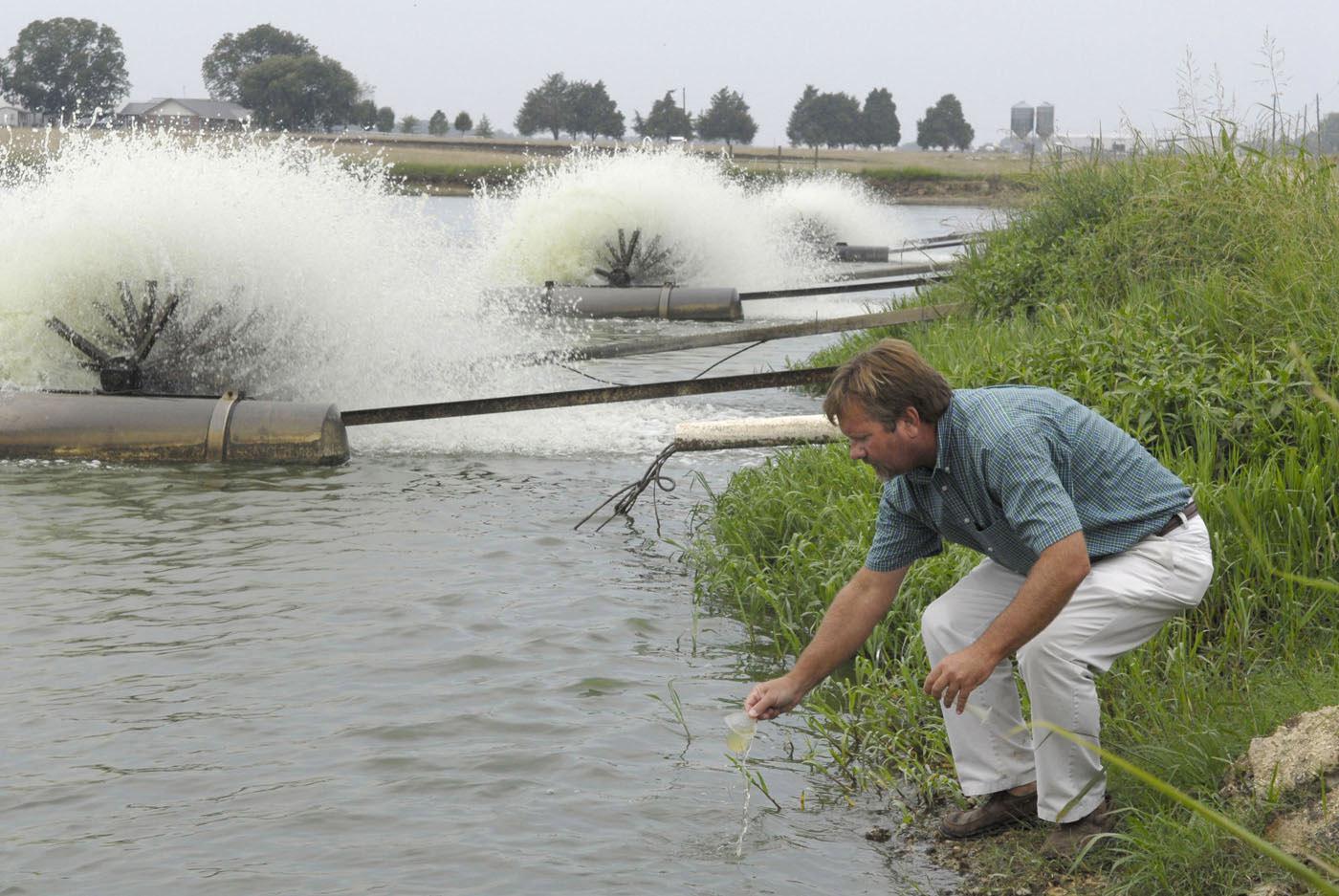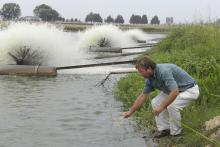Information Possibly Outdated
The information presented on this page was originally released on August 24, 2006. It may not be outdated, but please search our site for more current information. If you plan to quote or reference this information in a publication, please check with the Extension specialist or author before proceeding.
Catfish ponds fight battle with drought
MISSISSIPPI STATE -- The fact that they live in the water has not spared Mississippi's catfish from feeling the effects of the summer's drought and high temperatures.
Catfish ponds in east Mississippi average 6 feet deep and are filled by rainfall and runoff. Ponds in the Mississippi Delta average less than 5 feet deep and have pumps to keep them filled with groundwater.
Charlie Hogue, catfish production specialist with the Mississippi State University Extension Service, said this summer's drought means the ponds in east Mississippi are not being refilled.
“We've hardly had any rain, and some of our ponds are about 2 feet lower than they should be,” Hogue said. “We dig them deeper than Delta ponds because we have no means of refilling them if it doesn't rain. At this time of year, our ponds are evaporating at the rate of a quarter inch a day, and we've not had rain to fill them back.”
Water temperatures through much of July and August stayed in the 90s and above, and even nighttime temperatures didn't cool below the 80s. Hogue said hot weather means hot pond water, and that is not good for catfish.
“The hot water does not hurt them physically, but their appetite is not good,” Hogue said. “Catfish feed floats on the top of the water. Those top 6 to 8 inches of water are scorching hot, and the catfish don't want to swim up there to eat.”
Hogue said some producers cut back their feed by 25 percent to 50 percent, and others switched to every-other-day feedings.
Hot water does not hold oxygen well. Mississippi's catfish ponds have aeration, but producers must closely monitor oxygen levels to keep fish alive. Catfish don't feed as well when oxygen levels are low, so this further decreases their already heat-suppressed appetites.
“Ponds should have an oxygen saturation of two parts per million or above at night for the fish to eat well the next day, but a lot of ponds have been getting down to 0.9 parts per million or below,” Hogue said. “We have lost some fish because of these low oxygen levels, but if you get the aerators started early enough, you can keep the fish alive.”
Hot pond temperatures and low oxygen levels also create a problem at harvest time. Seining crews typically net the fish and leave them in a confined area of the pond overnight or until the live transport trucks arrive. The heat and low oxygen levels have changed this practice.
“Most seining crews are seining at night and loading in the morning,” Hogue said.
Jim Steeby, Extension aquaculture specialist, said high temperatures have been good for fish health, but that likely will change when temperatures drop.
“When water temperatures drop to the mid-80s rather than the mid-90s, we'll see a sharp increase in diseases such as enteric septicemia of catfish and columnaris,” Steeby said. “Catfish immune systems seem to work best at high temperatures and bacteria systems don't. When we get our first cool-down, oxygen problems will decrease, but fish health will diminish.”
When pond temperatures drop, producers will have to closely monitor nitrite levels in ponds and make sure there are adequate salt concentrations to counter this toxic substance.
“The one good thing about not getting a lot of rain is that it increases the salt concentrations in ponds,” Steeby said. “When we start getting significant rainfall, the rains dilute the salt content of the water and producers have to add chloride to prevent nitrite problems.




